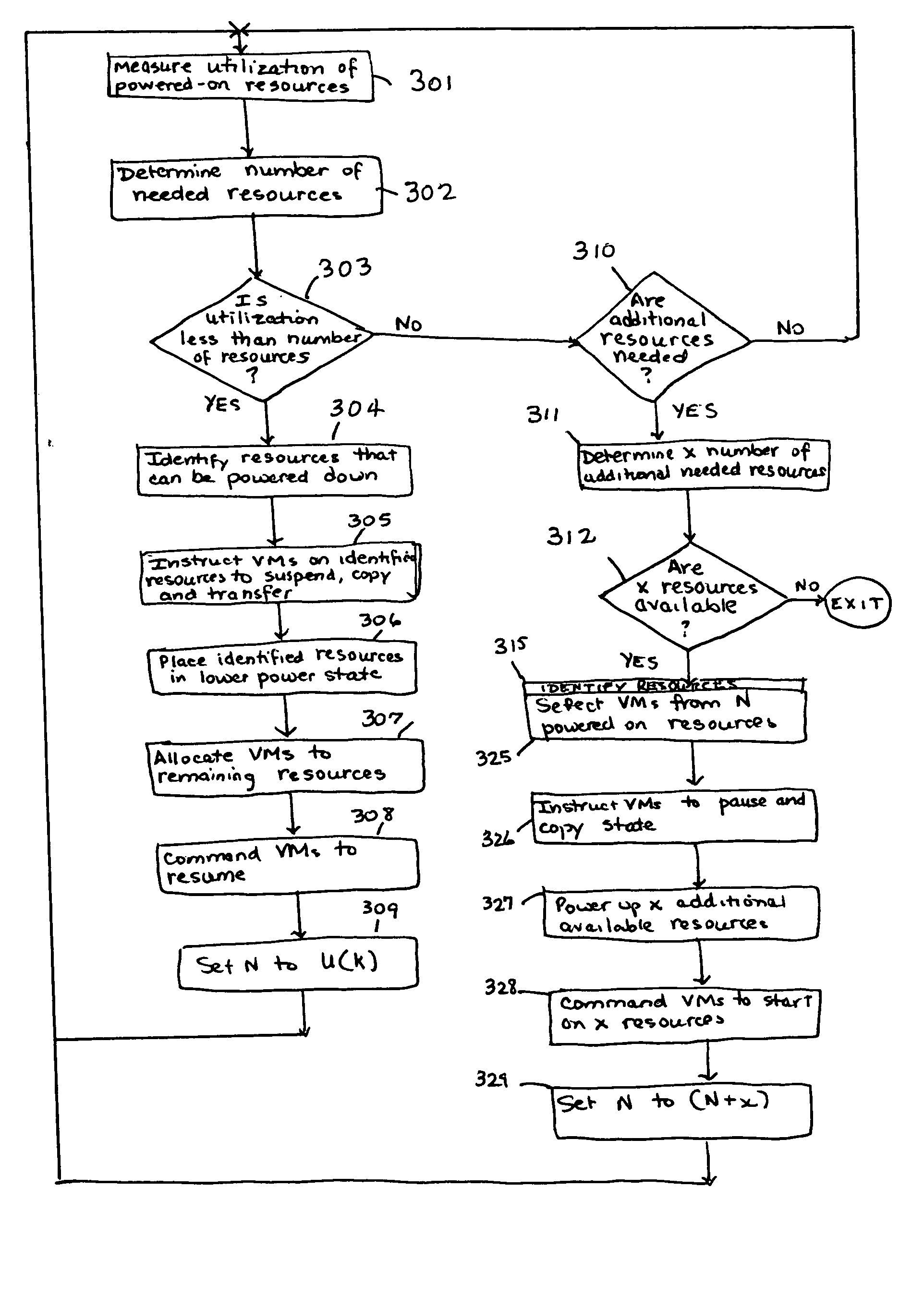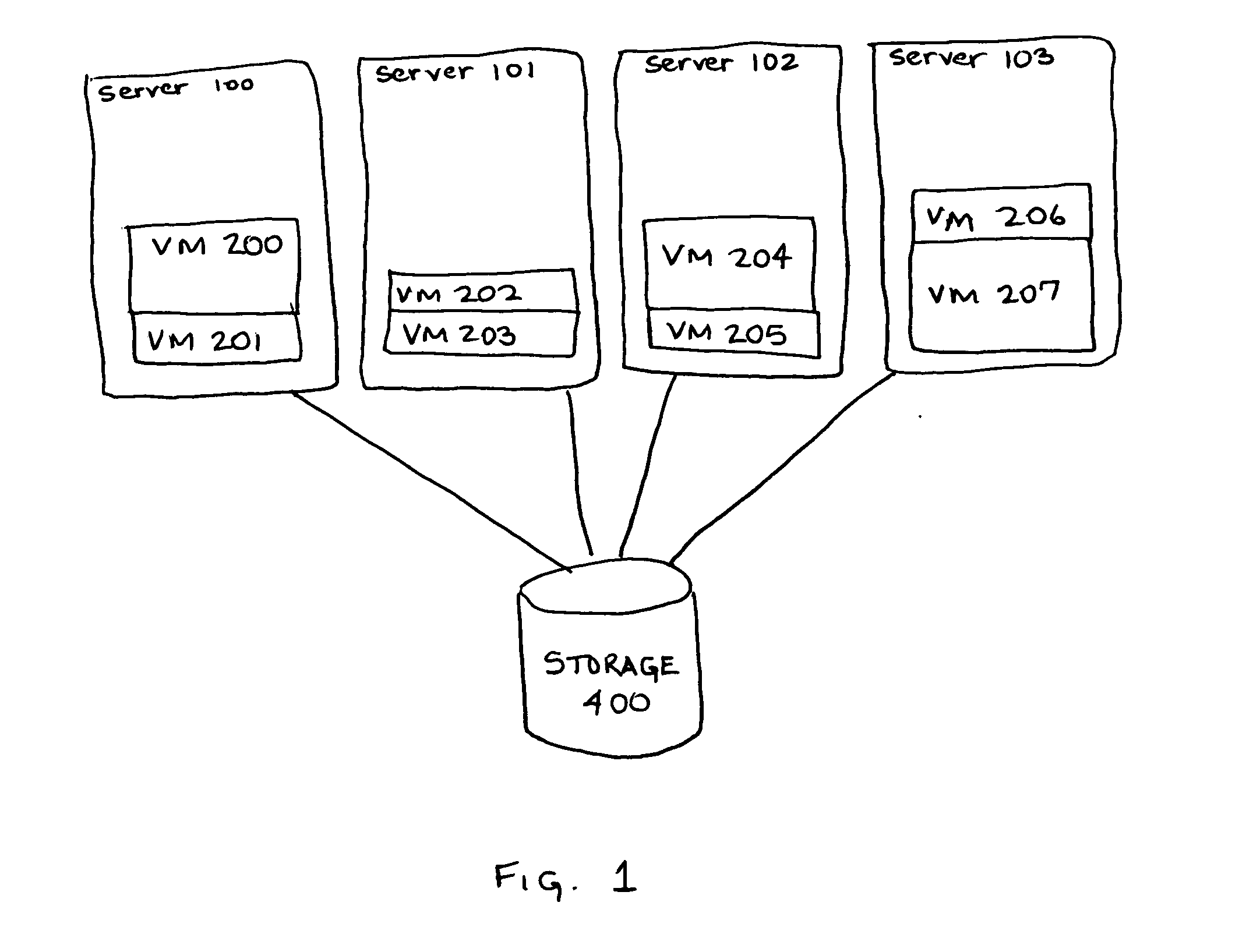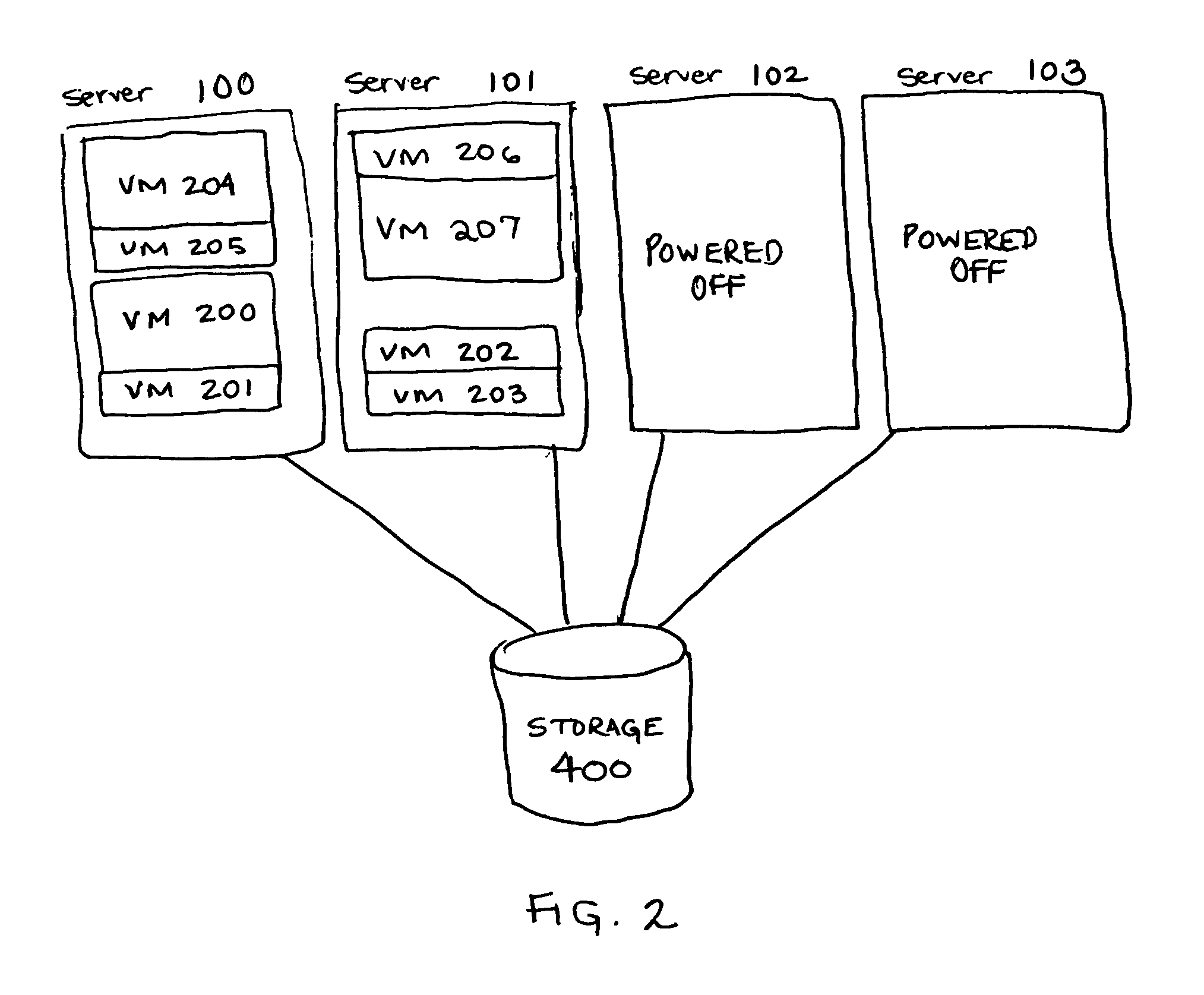Power-aware workload balancing usig virtual machines
a workload balancing and workload technology, applied in the direction of liquid/fluent solid measurement, sustainable buildings, instruments, etc., can solve the problems of minimization, inability to perform and inability to achieve load balancing or load imbalancing. , to achieve the effect of reducing power consumption, facilitating load imbalancing, and eliminating workload from some resources
- Summary
- Abstract
- Description
- Claims
- Application Information
AI Technical Summary
Benefits of technology
Problems solved by technology
Method used
Image
Examples
Embodiment Construction
[0014] Virtual Machine (hereinafter “VM”) technology can be combined with power management technology to reduce system power consumption. Virtual Machine technology gives each user or application the appearance of having sole control of all of the resources of a server system, while in fact allowing multiple users or applications to share a single physical resource without interfering with each other. VM technology can be implemented at the hardware level or at the software level, the implementations details of which do not affect the present invention. However implemented, VM technology abstracts the physical resources of a given server into one or more encapsulated, logically isolated operating system instances called virtual machines. To an application or user running within a VM, it seems as if the VM is running on a dedicated, stand-alone server. In effect, a single physical server is turned into multiple logical servers called virtual machines, which are completely isolated fr...
PUM
 Login to View More
Login to View More Abstract
Description
Claims
Application Information
 Login to View More
Login to View More - R&D
- Intellectual Property
- Life Sciences
- Materials
- Tech Scout
- Unparalleled Data Quality
- Higher Quality Content
- 60% Fewer Hallucinations
Browse by: Latest US Patents, China's latest patents, Technical Efficacy Thesaurus, Application Domain, Technology Topic, Popular Technical Reports.
© 2025 PatSnap. All rights reserved.Legal|Privacy policy|Modern Slavery Act Transparency Statement|Sitemap|About US| Contact US: help@patsnap.com



